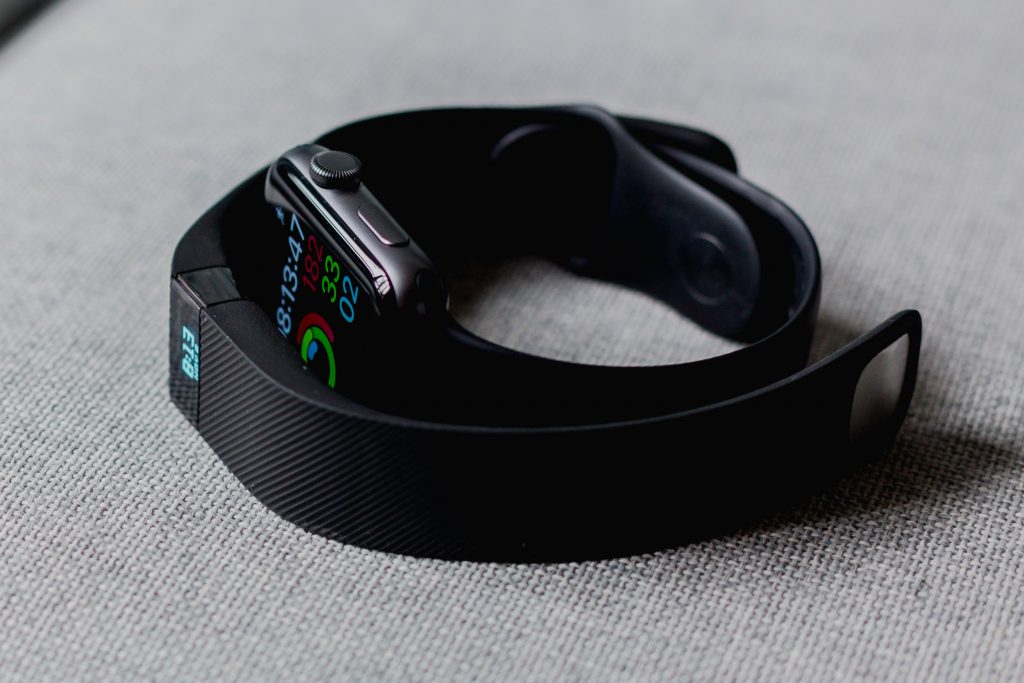Data Capture, Integration and Storage in Decentralised Trials
 5 years ago
By Josh Neil
5 years ago
By Josh Neil

Decentralisation of virtual trials has grown rapidly during the COVID-19 pandemic, changing the nature of clinical trials for a number of large and small pharma companies. While this new way of conducting clinical operations promises to reduce costs and increase patient participation in trials, it also bring with it a number of new complexities that pharma has not yet faced.
In light of its upcoming Clinical Operations Strategy Meetings, held on 27 May 2021 for the West Coast and 15 June 2021 for the East Coast, Proventa International looked into some of the technological intricacies of decentralised trials: data capture, integration and storage.
_____
Mistakes or delays by either patients or site staff can result in skewed or biased data that fails to adequately reflect what is happening in the trial. Such inaccurate data has a knock-on effect for the trial, delaying its conclusion significantly.
A number of CROs and startups exist to capture and store data across the entirety of the clinical trial process. THREAD Research, for which John Reites works, offers a unified platform working with an array of Pharma, Biotech and CROs to allow remote data capture from both patients and trial sites and conduct Virtual Visits in place of in-clinic visits.
The platform also offers eCOA/ePRO, patient engagement, sensor connectivity and retention features, and increased flexibility for sites. One of the largest digital vendors, Science 37, also offers end-to-end solutions for virtual trials, partnering with Novartis in 2018 to plan several of its siteless trials.
Certain tools exist to allow pharma organisations to determine where sites are underperforming. Trials.ai is one such platform that lets pharma see real-time feedback in order to correct data collection errors.
In one survey, site-based participants noted technology’s use in removing layers of management, as well as assisting with increased site engagement by providing a better quality patient population.

eCOA
Electronic clinical outcome assessment (eCOA) systems capture improvements in treatment that can be fed back to patients, as well as informing clinicians of changes. The data they produce is also increasingly useful to regulators, who require such information in order to provide approvals.
There is already a significant body of evidence that suggests eCOA provides greater data quality compared with paper documents, and is not overly expensive compared with paper data collection: paper, seemingly cheap, has a number of hidden costs. eCOA, on the other hand, reduces compliance costs due to data quality and real-time data monitoring.
For those companies not wishing to invest up- front in ePRO or eCOA systems, vendors exist to outsource all needs, including Signant Health and IQVIA. These can supply sites with smart devices, and hand sensor logistics. A number of other data capturing organisations exist that supply products to capture data from the patient: Medidata, Oracle, and eClinicalSolutions are all fairly well-known and provide a range of resources for creating and automating eCOAs and other outcome data management systems.
There are a number of other CROs specialising in transferring clinical research into the Cloud. These include Florence Healthcare and ClinicalResearch.io.
Wearables
Wearable technologies are a major facilitator of decentralised trials. With consumer devices like smartphones and internet-enabled watches, patient vitals and statistics can be tracked in-real time from home, with a range of secondary functions also possible like increased patient engagement, reduced costs and better understanding of the condition being researched. Because they measure the patient in day-to-day life rather than a clinical setting, their measurements can be more accurate and reliable than standard models.
Beyond this, wearables also allow for easy submission of this data to the clinician, removing the need for written PROs or diaries, saving the patient and the clinician time and reducing dropout because of that.
The vendor market for creating wearable tech is growing, with several organisations currently developing in-house models. The trend is set to move towards outsourcing these solutions, however, simply because outsourcing firms have innovation and dedicated time to create those solutions.
Continuous monitoring and sensor work also has an overall positive impact. These allow clinicians to see active and passive data points from medical devices and wearables in specific use-cases, capturing data beyond ePRO or surveys.
Despite these benefits, wearables do have a few drawbacks. They can increase trial costs depending on the type of wearable and what data is being
drawn, as well as the number of trial participants needed.
There is also the problem of the data itself. Data issues include the potential for wearables to be used wrongly and thus supply bad readings; for misreadings of data or erroneous data entry after the information has been taken from the wearable; and the need for facilities to store greater quantities of data than have ever been handled before.
Another issue is the wearables’ impact on the participant. Wearables can directly affect engagement either through over-complication, cumbersomeness or privacy intrusion. Medical-grade wearables have been particularly problematic in the past, often being too cumbersome for many to bother wearing. Now, however, new devices are entering the field.

Apple Watch and Fitbit
The two major activity trackers currently available are the Apple Watch and Fitbit, though other trackers are quickly gaining ground. In 2018, the series 4 Apple Watch received two FDA approvals for use in trials, as an EKG and a pulse monitor, though the technologies can do much more, including monitoring respiratory data, exercise and levels of movement.
It has generally been said that in the years to 2025, wearables will become much more widely used, with around 70% of clinical trials set to incorporate wearables by that point.
In order to make the most of wearables in a company, organisations are encouraged to:
• Set up a ‘in fast, fail fast’model with proof-of-concepts to study feasibility of tech and learn best use cases
• Set up a team to focus on POC innovation and push best practice throughout the company
• Involve external stakeholders as quickly as possible, to understand consumer perspectives and usability
• Incorporate KPIs quickly to ensure endpoints, and how they will be used, are fully understood
• Ensure site staff have the experience to check patients are correctly using their devices, and to complete a data download (if necessary) during check-ups.
Wearables regulation
One issue with using wearables in trials is the lack of regulatory clarification at present. Acceptance of data provided by wearables has been a longstanding issue, recently brought up by FDA Commissioner Scott Gottlieb in a statement on the slow integration of real-world data into clinical research. This follows
a 2018 FDA statement discussing how RWD could better inform regulatory decisions.
This partly stems from a lack of data quality from many wearables. The difficulty of truly identifying the data originator or source is a particular issue, addressed several times by the FDA. There are also concerns around the security and confidentiality of wearables, which many regulators consider only a storage site for the data, with an audit trail beginning only after the data enters a sponsor’s EDC system.
The Critical Path Institute’s ePRO Consortium has offered relief in this area, however, with 2018 recommendations on selecting wearables and assessing their suitability for measuring relevant endpoints. Other guidance has been written by the Clinical Trials Transformation Initiative (CTTI).
This situation is still ongoing: despite regulators’ enthusiasm for technologies which expedite pharmaceutical processes and make lives better for patients, as yet the beneficial applications stemming from wearables are simply not satisfactory for a real green light from regulators. This needs to change soon if wearables are to see rapid uptake and approval.

Data-sensing and digital biomarker-collecting technologies
Digital biomarker collectors, which collect behavioral and physical data from patients, are one type of wearable. Many CROs supply such collectors and the systems which integrate their data, such as Actigraph. Google’s Verily medicare
company is doing the same with its Study Watch, and Vivify Health provides ‘kits’ including a tablet featuring an in-built wireless vitals monitor.
With advancing technology comes the potential for sensors to be created that need limited skin contact, even for such functions as heart rate monitoring and breath effort. These sensors include passive tags woven into clothes around the chest and wrists.
VR Equipment
Another technology that’s seen limited discussion compared to wearable tech or apps is that of virtual reality (VR) equipment. The market for VR equipment in pharma is growing: in the five years to 2017, VR and augmented reality (AR) in healthcare rose $451 million, and is expected to see around 54.5% annual growth up to 2023 and beyond.
While VR is being primarily used in hospitals and other healthcare centres to increase patient understanding and reduce stress rates, it does have strong application in clinical trials too. As an Interactive Journal of Medical Research (IJMR) study showed, 94% of patients undergoing a VR experience on how HIV medication protects the body’s blood cells self-reported as more closely following treatment regimes, with follow-up tests supporting this fact.

Operationality, not Technology
The importance of focusing on the operations of decentralised studies as equally as the technology for clinical trials must be stressed. Technology should work well and be seamless to support all the study stakeholders as the enabler of study operations.
To counter possible setbacks around technology – device failures or incorrect patient usage – Janssen has created an internal ring-fenced team and budget to ensure compliance. One spokesperson for the company mentioned that such problem-solving teams need to be extremely agile to take in multiple revisions to plans as and when they occur.
_____
Joshua Neil, Editor
Proventa International
To ensure you remain up-to-date on the latest in clinical operations, sign up for Proventa International’s online Clinical Operations Strategy Meetings, held on 27 May 2021 for the West Coast and 15 June 2021 for the East Coast.

Role of an Immunologist: Exploring the Responsibilities
In the intricate web of human health, the immune system stands as a vigilant guardian, tirelessly defending against potential threats. At the forefront of understanding, deciphering, and harnessing the immune system's power is the immunologist. This article delves into the...
2 years agoRole of an Immunologist: Exploring the Responsibilities
In the intricate web of human health, the immune system stands as a vigilant guardian, tirelessly defending against potential threats. At the forefront of understanding, deciphering, and harnessing the immune system's power is the immunologist. This article delves into the...
2 years ago
Improving Warehouse Efficiency: The Role of Technology and Best Practices
In the fast-paced world of supply chain management, warehouse efficiency plays a pivotal role in ensuring timely and accurate order fulfillment while minimizing costs. With the rising demands of e-commerce and globalization, businesses are continually seeking innovative ways to optimize...
2 years agoImproving Warehouse Efficiency: The Role of Technology and Best Practices
In the fast-paced world of supply chain management, warehouse efficiency plays a pivotal role in ensuring timely and accurate order fulfillment while minimizing costs. With the rising demands of e-commerce and globalization, businesses are continually seeking innovative ways to optimize...
2 years ago
How to Reduce the Cost of Clinical Trial Supply Chain While Maintaining Quality and Efficiency
Clinical trial supply chain is a critical component of drug development, ensuring that drugs are available for testing, regulatory approval, and distribution. However, managing this supply chain can be challenging, with factors such as cost, quality, and efficiency all coming...
3 years agoHow to Reduce the Cost of Clinical Trial Supply Chain While Maintaining Quality and Efficiency
Clinical trial supply chain is a critical component of drug development, ensuring that drugs are available for testing, regulatory approval, and distribution. However, managing this supply chain can be challenging, with factors such as cost, quality, and efficiency all coming...
3 years ago